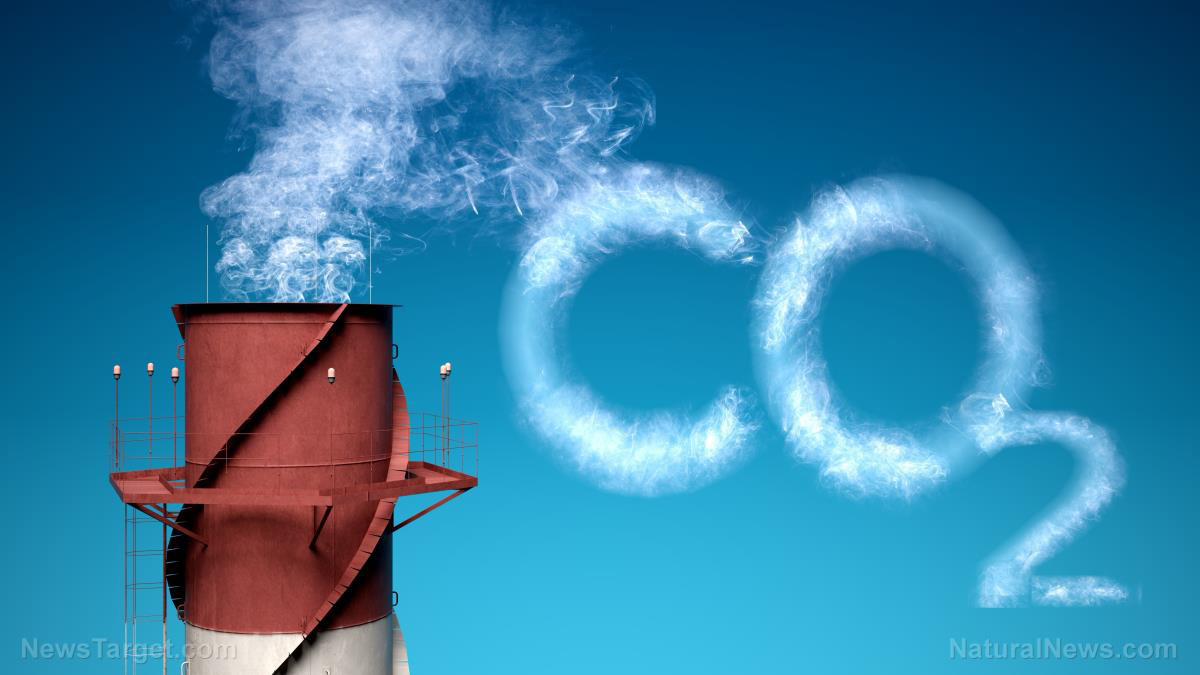Trouble in the ranks: Environmentalists fight each other over creation of a catalyst for converting CO2 into plastic
03/19/2019 / By Vicki Batts

Scientists claim that they have developed a new catalyst that can turn the much-talked about compound, carbon dioxide, into plastic. The inventors believe that this new chemical process could help save the environment — but many environmental groups have a bone to pick about that assertion. As usual, there are many concerns as to whether or not this so-called solution will cause more problems than it solves.
Some environmentalists have their doubts about the technology, at least in part due to the fact that plastic waste has become a worldwide epidemic — and creating new ways to make plastic does little to address this very grave problem.
The new technology was pioneered by researchers hailing from the University of Toronto, the University of California at Berkeley and the Canadian Light Source (CLS). CLS is Canada’s synchrotron light source facility; the research hinged upon CLS and a new technique that is unique to the organization.
This special technique is centered on a carbon dioxide reduction reaction. With the help of an electrical current and a chemical reaction created with an exclusive catalyst, carbon dioxide (CO2) can be transformed into other compounds.
While many different metals can be used to transform CO2 into something else, only copper can make CO2 into ethylene — which is the primary material used in polyethylene plastics.
Phil De Luna, the study’s lead author and Ph.D. student at University of Toronto, commented, “Copper is a bit of a magic metal.”
“It’s magic because it can make many different chemicals, like methane, ethylene, and ethanol, but controlling what it makes is difficult,” he explained further.
But, the researchers claim to have fine-tuned the process by creating a catalyst that maximizes ethylene creation while also reducing methane production. In theory, it may sound great, but some believe it’s just too good to be true.
The Chief Scientist for Greenpeace UK, Dr. Doug Parr said, “The main environmental problem associated with plastic is that there is too much of it, and it’s in the wrong places.”
“This new process won’t make the plastic problem any better — it might have some positive impact on CO2 levels if we employed it on a vast scale, but then we would continue to have a plastic problem on a vast scale,” Parr added. He contended that without a coinciding revolution regarding plastic waste, this new conversion technique sounds like “very bad news.”
While the researchers who pioneered the CO2-to-ethylene tech say that they aren’t looking to address the issue of plastic waste, the fact is that the production and deposition of plastic is extremely harmful to the environment. The making of plastic releases a myriad of hazardous pollutants into the atmosphere — and then after the plastic is made, it makes its way into landfills, oceans and the stomachs of hungry animals.
Even tap water in the United States has been found to contain plastic shreds; to say its an invasive product is putting it mildly.
And to disregard the problem of plastic is, at best, short-sighted. But according to lead author De Luna, carbon capture technology could make their CO2-to-plastic brainchild more environmentally friendly and sustainable. He contends that this recently developed technology could pave the way for a more sustainable and less harmful plastic by using CO2 instead of conventional fossil fuels for production.
Plastic is deeply ingrained in our world; everything from cellphones to cookware can be made with the stuff. But, it comes with a steep (and often ignored) price to the environment.
Sources include:
Tagged Under: breakthrough, carbon dioxide, carbon emissions, copper, discoveries, environment, Methane, Plastic, plastic waste, polyethylene plastics, research, science
RECENT NEWS & ARTICLES
COPYRIGHT © 2017 ENVIRON NEWS




















